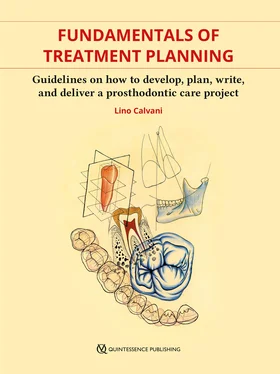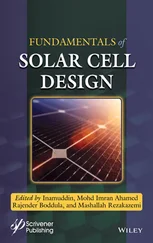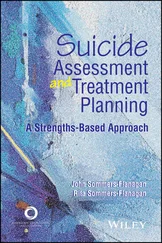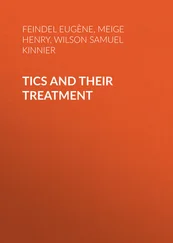Digital treatment planning
Regarding treatment planning, increasingly perfected artificial narrow intelligence (ANI) algorithms allow for the planning of clinical cases by means of digital workflows and simplified procedures, creating with excellent approximation visual graphs that clearly show the clinician where and how to craft any fixed prostheses. This can be done without producing physical casts that are both costly and require storage space.
Cloud dentistry
By means of digital communication media, clinicians and dental technicians are now able to easily communicate online and share information about the treatment on an ongoing basis. By DICOM and other dental medical data files over the internet, the milling or 3D printing of dental prosthesis can be activated remotely from anywhere in the world.
Computer-guided implant-positioning software and hardware
This allows the clinician to place virtual implants and teeth according to the underlying bone position as well as the future teeth. The use of this hardware and software has vastly improved the understanding and treatment planning of partially or completely edentulous cases.
3D virtual articulators
These reproduce the best analog articulators. They are diagnostic tools able to study any prosthodontic case.
Facially driven dentistry
Clinicians at the chairside and technicians in their laboratories are now able to create digital dental guidelines and landmarks and show the patient a previewed 3D version of the virtual representation of the dentition and face, possible smile, and prosthetic outcome of the treatment plan. This is useful for discussions with the patient regarding possible present and future dental treatments and their economic implications. The information and patient preferences can be stored and saved for future reference.
Today’s technology also allows us to rapidly prototype, design, and tweak predictable provisional customized mock temporary restorations, digital RPD substructures, and digital CD prostheses. These files can then be saved on a dedicated database and be used to design, craft, and manufacture restorations using a broad range of digital milling or 3D printing machines in our offices.
Digitally created, usefully milled, and wearable pretreatment mock temporary restorations can currently be temporarily cemented and used without any tooth preparation. They enable the patient to try out the mock-up in vivo and also in their own environment once they leave our offices. This try-in gives patients a good approximation of the esthetics and functional aspect of the planned and proposed prosthetic outcome. If the patient is satisfied with the esthetics and function of the temporary restorations after the try-in, the digital image can be scanned in the mouth, mounted on virtual articulators, and used to produce a digital version of the final prosthesis. This is useful to either create minimally invasive prosthetic ceramic pieces to be bonded over the remaining dentition, or useful guides to prepare what remains and adapt it to the new identical final prostheses. The newest digital light processing machines and bioprinting machines will predictably one day be precise and powerful enough to recreate even sound brand-new teeth for implantation.
Computerized laboratory technologies
New laboratory ceramic materials increasingly resemble natural teeth in terms of their optical and physical properties. 3D milling and printing machines are increasingly changing the way the laboratory works and how it relates to the clinical office. Indeed, despite what the monumental Dr House wrote in 1937, 113these AI machines are becoming more and more able to create and craft artistically what we humans are able to do with our art and dexterity. We have been the masters up until now, but for how much longer?
This evident digitalized simplification of procedures means more ‘predictability,’ which consequently also means less undesirable posttreatment complications, including a decreased risk of possible working cross-contamination between the clinic, the laboratory, and the social environment.
Holographic prosthodontics
HoloLens hands-on 2 is a brand new powerful mixed-/augmented-reality tool, interconnected by means of a mixed-reality app that allows us to see what we cannot see with the naked eye, and so to touch, move, increase, and decrease – in a very practical and ‘quasi-normal’ intuitive way – the size of holographic virtual objects that physically appear in front of or around us. Users move their hands in a close, dedicated 3D virtual world that allows them to see, interact with, and use all types of actual (real) analog devices that are connected to the system. This means that we do not physically touch the instruments but rather touch and work with them from a virtual remote. We then receive useful written information about these devices that ‘float in the air’ before us so we can know, analyze, plan, and better control our workflows.
This situation is very difficult to imagine and understand if you are not actually working with it. However, it is extremely useful and will soon dramatically change the way we live and work.
The day after tomorrow
Apart from all that has been discussed in this chapter, it is not possible for us to actually foresee which prosthodontic tools we will use in the future. Although the organization of treatment planning will certainly change, the clinical rationale on which treatments are based will not change. Even if one day an artificial general intelligence (AGI) team takes the place of humans at the chairside, the step-by-step planning procedure is simplified and sped up by new diagnostic methods, and workflows change according to the capabilities of new diagnostic and treatment tools, the clinical rationale remains the same.
The rise of deep-learning and self-learning AI algorithms is currently turning the world upside down. Practically, computers program themselves instead of being programmed by humans, enabling the computers themselves to ‘learn’ how to perform useful assignments. Computer programs have taken over from the old analog rules and are performing assignments in the most useful way. Training data programmed into increasingly large artificial neural networks are being adjusted and reordered to obtain the desired result. Furthermore, these results show that a deep-learning system that has been well-trained enough may find indirect and precise repeatable abstract patterns in data. This technique is already being used to perform an increasing number of practical tasks, from face recognition to predicting diseases from medical images, just like human doctors do when they investigate their patients’ signs and symptoms in order to understand their ailments, diseases or illnesses. 114So, how long before these incredibly quick machines completely change medical and dental medical science? By means of DNA sequencing manipulation, it will also be possible to program the elimination of diseases, including caries, and align the position of the teeth from their eruption. And when it is not possible to change something in that way, it will be removed, terminated, and rebuilt by powerful physically and chemically instructed nanocarriers, nanorobots, and machines.
Indeed, the evidence shows that everything that has been imaginable and thinkable in science has more or less been achieved in practice, because humans have an infinite capacity for curiosity and imagination. Therefore, it is foreseeable that in a few decades from now, the speciality of prosthodontic treatment planning and its current tools will be radically changed.
References
1.Academy of Prosthodontics. History. https://www.academyofprosthodontics.org/History.html. Accessed 8 February 2019.
2.Academy of Prosthodontics. Glossary of Prosthodontic Terms. https://www.academyofprosthodontics.org/_Library/ap_articles_download/GPT8.pdf. Accessed 20 March 2019.
Читать дальше












